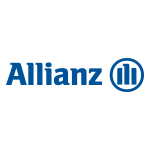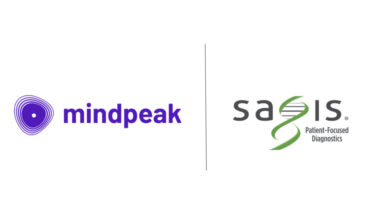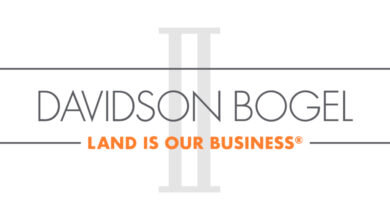Allianz: Volatile Markets, US Lawsuits, ESG Issues and SPACs Create New Risks for Managers

- AGCS report identifies trends for risk managers, brokers and insurers in the Directors and Officers (D&O) space.
- Pandemic-related insolvency risks have not yet been fully averted, while risk of asset bubbles and inflation are a rising concern.
- Shareholder derivative suits in the US against foreign companies becoming more frequent.
- SPACs are on the rise globally – and come with a number of D&O risks.
- AGCS market outlook: “D&O insurance market is showing signs of stabilizing in terms of capacity. However, the potential for further loss trend inflation remains and requires a disciplined underwriting approach.”
NEW YORK–(BUSINESS WIRE)–#Directors–Board members and company executives can be held liable for an increasing range of scenarios. Today’s market volatility, with the increased threat of asset bubbles and inflation, the prospect of a growing number of insolvencies due to the pandemic environment, together with rising scrutiny around the environmental, social and governance (ESG) performance of companies and the urgency for robust cyber resilience are key risks for Directors and Officers (D&Os) to watch in 2022.
Risk managers and their D&O insurers should also closely monitor potential exposures to US derivative actions and other forms of litigation, while also not underestimating the challenges around increasingly popular SPACs (special purpose acquisition companies), according to the latest edition of Allianz Global Corporate & Specialty (AGCS)’ annual D&O report.
“The actions and culture of organizations and their directors and officers are coming under heightened scrutiny from a wide range of stakeholders, with litigation risk a primary concern,” says Shanil Williams, Global Head of Financial Lines at AGCS.
“This comes against the backdrop of a stabilizing D&O marketplace, although capacity is still tight in some segments and many companies would like to buy more limits than the industry can offer. The market remediation has advanced, including our own portfolio at AGCS, and this will gradually ease the pressure that some of our clients are facing. We are adopting a cautious and disciplined underwriting approach and need to remain wary about the current volatile business environment and closely monitor loss trend patterns. However, the D&O insurance space is slowly, but surely, offering opportunities for profitable growth again in selected pockets – and we are eager to pursue these.”
Uncertain insolvency issues continue to be key topic in the D&O space
The withdrawal of support measures for companies established during the pandemic sets the stage for a gradual normalization of business insolvencies in 2022. The Euler Hermes Global Insolvency Index is likely to post a +15% y/y rebound in 2022, after two consecutive years of decline (-6% forecast in 2021 and -12% in 2020). While the wave of insolvencies has so far been milder than anticipated, mixed trends are expected across the world. In less developed markets, such as Africa or Latin America, the number of insolvencies is expected to increase faster compared to more developed economies, such as France, Germany and the US, where the impact of the governmental support is expected to last for longer. Traditionally, insolvency is a major cause of D&O claims as insolvency practitioners look to recoup losses from directors. There are many ways that stakeholders could go after directors following insolvency, such as alleging that boards failed to prepare adequately for a pandemic or for prolonged periods of reduced income.
Market volatility, climate change and digitalization key issues
The financial services industry, but also companies from other sectors, continues to face multiple risk management challenges in the current economic climate. Markets are likely to become more volatile with the increased risk of asset bubbles and inflation rising in different parts of the world. At the same time, more banks and insurers are expected to assign individual responsibility for overseeing financial risks arising from climate change, while investors are paying closer attention to the adequate and timely disclosure of the risk that it poses for the company or financial instrument they invest in. The tightening regulatory environment, the prospect of climate change litigation or ‘greenwashing’ allegations could all potentially impact D&Os.
Meanwhile, digitalization has further accelerated following Covid-19, creating enhanced cyber and IT security exposures for companies. This requires firms’ senior management to maintain an active role in steering the ICT (information and communication technologies) risk management framework. “IT outages and service disruptions or cyber-attacks could bring significant business interruption costs and increased operating expenses from a variety of causes, including customer redress, consultancy costs, loss of income and regulatory fines. Last, but not least, brand reputation can also suffer. All this can ultimately impact a company’s stock price with management being held responsible for the level of preparedness,” says Joseph Caruso, Regional Head Financial Institutions North America.
Heightened litigation risk in the US
Litigation risk continues to be a top D&O concern, in particular around shareholder derivative actions which are increasingly being brought on behalf of foreign companies in US courts. “A number of new lawsuit filings, the recent openness of certain courts to extending long-arm jurisdiction, and a possibly record-breaking settlement announced in October 2021, point to heightened US litigation risk for directors and officers of non-US domiciled companies,” David Ackerman, Global Claims Key Case Management at AGCS, emphasizes.
Since early 2020, a group of plaintiffs’ firms has brought more than 10 derivative lawsuits in New York state courts on behalf of shareholders of non-US companies seeking to hold directors and officers legally and financially accountable for various breaches of duty to their corporations. The financial hurdles to bring suit in the US are significantly lower than in many other countries, while US courts and juries are considered more plaintiff-friendly than many others around the world. The consequences to directors and officers forced to defend themselves in derivative litigation before US courts can be severe. In what may turn out to be a record-setting settlement for a US derivative lawsuit, in October of this year defendants agreed to pay a minimum of US$300mn to settle litigation brought in a New York state court by shareholders of Renren, a social media corporation based in China, and incorporated in the Cayman Islands, after allegations of corporate misconduct.
Elsewhere in the US, the report also notes that a decision by the Delaware Supreme Court in 2019, Marchand v. Barnhill, which focused on the fallout from a listeria outbreak, is potentially leading to greater exposure for individual corporate directors in the form of shareholder derivative suits, as it is seen to have lowered the previously high standard required for plantiffs to prove a board’s failure to comply with their duty of care, as established in the landmark Caremark Int’l verdict in 1996. Board members must accordingly re-examine whether there is sufficient Side A cover (which covers liabilities incurred by an individual in their capacity as a director or officer) in their D&O insurance program.
Scrutiny over SPACs
Another emerging risk in the global D&O insurance space comes from the growth of so-called Special Purpose Acquisition Companies (SPACs), also known as ‘blank check companies’. These represent a faster track to public markets. Advantages fueling the growth of SPACs over traditional Initial Public Offerings (IPOs) include smoother procedures, less regulatory and process burdens, easier capital sourcing and shorter timelines to complete a merger with target companies.
During the first half of 2021, the number of SPAC mergers in the US, both announced and completed, more than doubled the full year total of 2020 with 359 SPAC filings, garnering a combined US$95bn raised. The growth of SPACs in Europe may not match the scale of the US boom, but there is still a growing expectation that it will increase despite a less favorable company law environment compared to the US. In Asia, the market is slowly gaining momentum with a significant uptick in companies in China, Hong Kong and Singapore as a new route to accessing capital markets.
SPACs carry a set of specific ‘insurance-relevant’ risks, and losses are already reported to be flowing through to the D&O market as both the SPAC and the private target company typically obtain D&O coverage. “Exposures could potentially stem from mismanagement, fraud or intentional and material misrepresentation, inaccurate or inadequate financial information or violations of rules or disclosure duties,” says David Van den Berghe, Global Head of Financial Institutions at AGCS.
In addition, a failure to finalize the transaction within the two-year period, insider trading during the time a SPAC goes public, a wrong selection of a target to acquire or the lack of adequate due diligence in the target company could also come into play. Post-merger the risk of the go-forward company to perform as expected or failure to comply with the new duties of being a publicly-listed company also needs to be considered.
About Allianz Global Corporate & Specialty SE
Allianz Global Corporate & Specialty (AGCS) is a leading global corporate insurance carrier and a key business unit of Allianz Group. We provide risk consultancy, Property-Casualty insurance solutions and alternative risk transfer for a wide spectrum of commercial, corporate and specialty risks across 10 dedicated lines of business.
Our customers are as diverse as business can be, ranging from Fortune Global 500 companies to small businesses, and private individuals. Among them are not only the world’s largest consumer brands, tech companies and the global aviation and shipping industry, but also wineries, satellite operators or Hollywood film productions. They all look to AGCS for smart answers to their largest and most complex risks in a dynamic, multinational business environment and trust us to deliver an outstanding claims experience.
Worldwide, AGCS operates with its own teams in 31 countries and through the Allianz Group network and partners in over 200 countries and territories, employing around 4,400 people. As one of the largest Property-Casualty units of Allianz Group, we are backed by strong and stable financial ratings. In 2020, AGCS generated a total of €9.3 billion gross premium globally.
For more information please visit http://www.agcs.allianz.com/ or follow us on Twitter @AGCS_Insurance and LinkedIn.
Cautionary Note Regarding Forward-Looking Statements
Contacts
Press:
Emil Janssens
929.422.4228
[email protected]
Erin Burke
Stanton
631-681-8770
[email protected]



